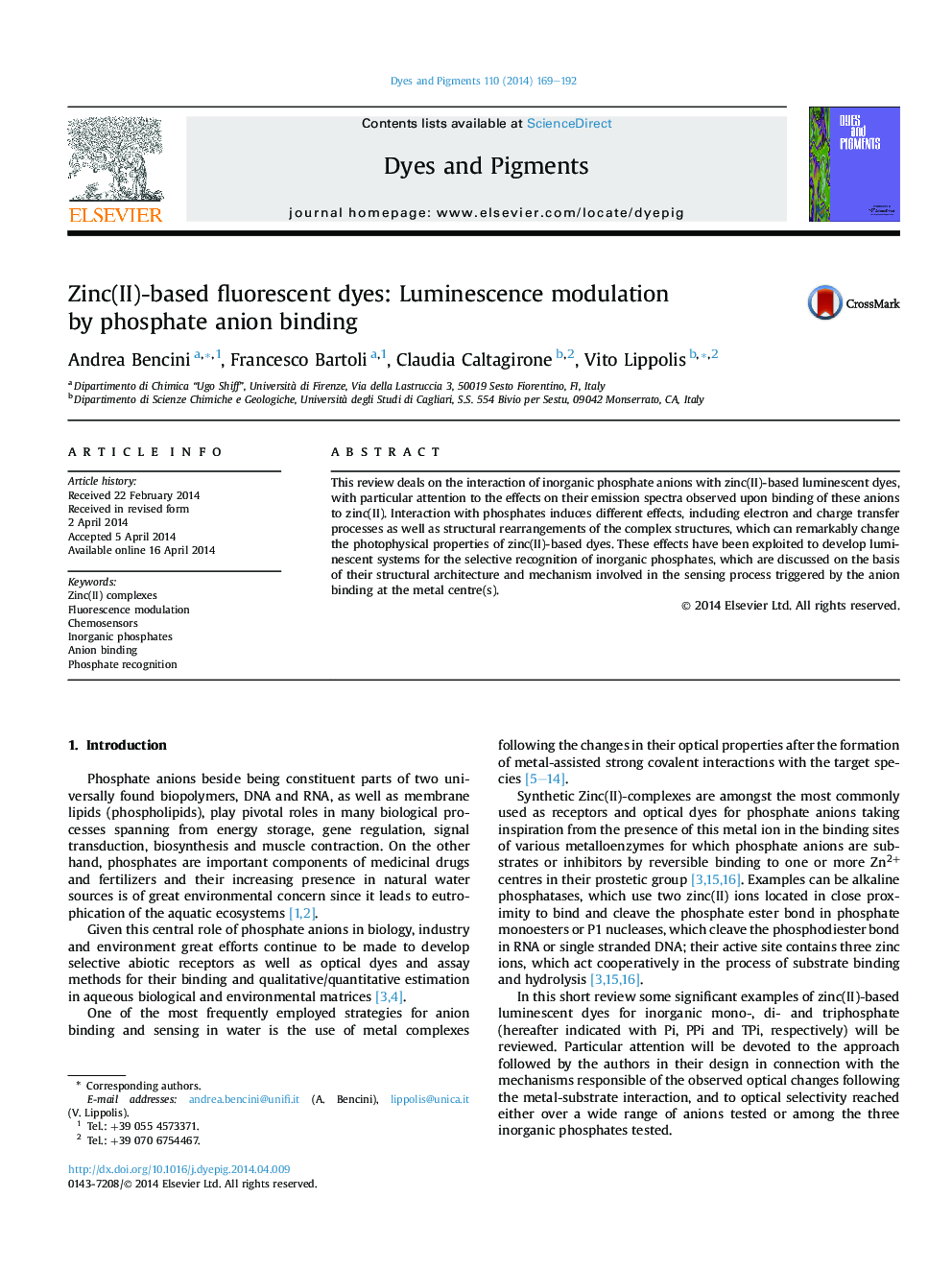| Article ID | Journal | Published Year | Pages | File Type |
|---|---|---|---|---|
| 176027 | Dyes and Pigments | 2014 | 24 Pages |
•Phosphate interaction with Zn2+ changes the optical properties of the complex.•Phosphate binding modulates electron and charge transfer processes in Zn2+ complexes.•Luminescent zinc(II) complexes can be used as chemosensors for phosphates.•Selective phosphate recognition is achieved via a suitable design of Zn2+ complexes.
This review deals on the interaction of inorganic phosphate anions with zinc(II)-based luminescent dyes, with particular attention to the effects on their emission spectra observed upon binding of these anions to zinc(II). Interaction with phosphates induces different effects, including electron and charge transfer processes as well as structural rearrangements of the complex structures, which can remarkably change the photophysical properties of zinc(II)-based dyes. These effects have been exploited to develop luminescent systems for the selective recognition of inorganic phosphates, which are discussed on the basis of their structural architecture and mechanism involved in the sensing process triggered by the anion binding at the metal centre(s).
Graphical abstractThe luminescence properties of Zn2+ complexes are modulated by their interaction with inorganic phosphates via different mechanisms, in particular charge, energy and electron transfer processes, metal removal and excimer formation.Figure optionsDownload full-size imageDownload as PowerPoint slide
